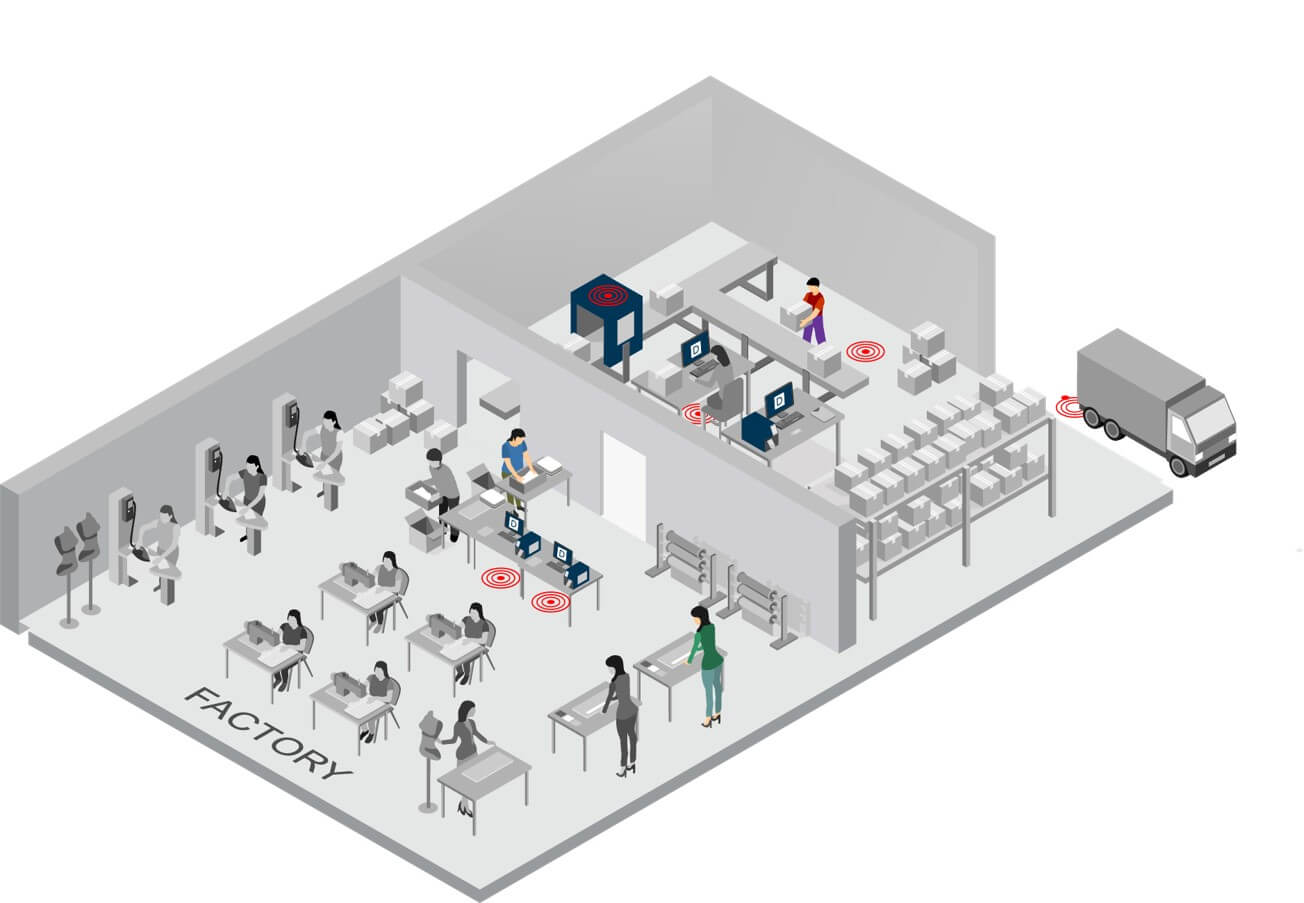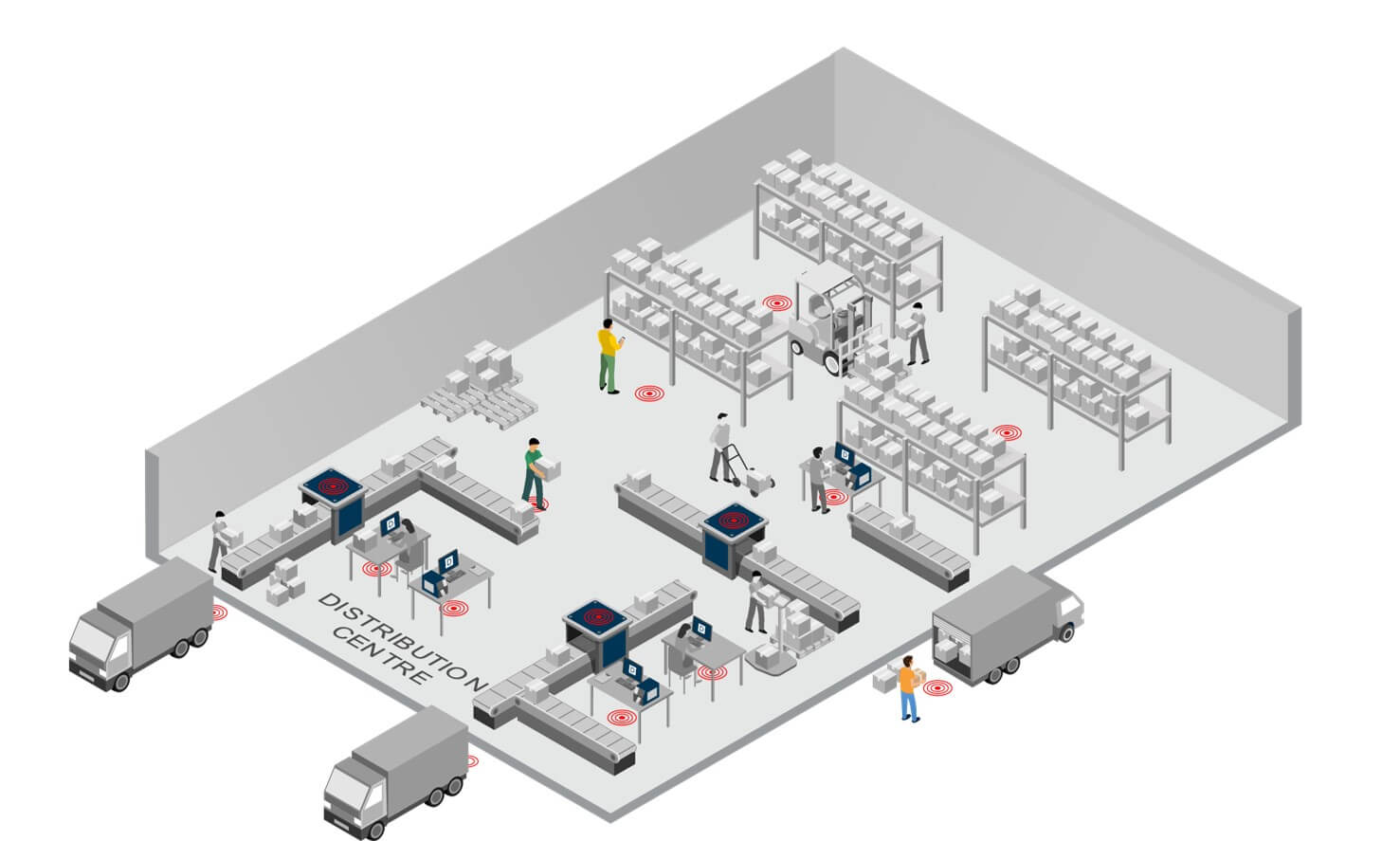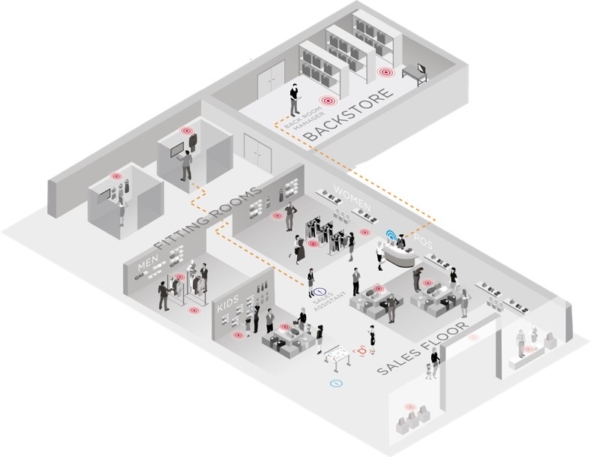How retailers are utilising RFID across the supply chain and the benefits from doing so
RFID Supply Chains: An End-to-End Guide
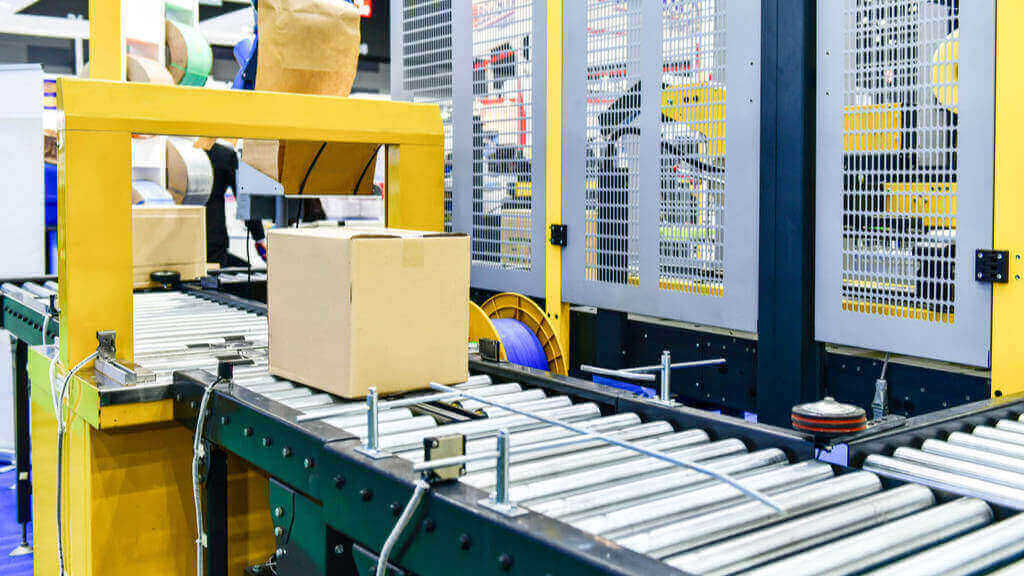
Summary of RFID in Retail
Radio Frequency Identification (RFID) is a growing force behind the scenes in retail. For the uninitiated, the technology involves using radio frequency (RF) to share information about an object’s unique identity (ID). An RFID reader can identify or ‘read’ hundreds of tags in a matter of seconds, at a distance of several feet. For retail, this reduces the reliance on barcodes for inventory management and opens the door to more advanced applications utilising real-time data.
While the story for RFID in retail began in stores, due to the dramatic increase in stock accuracy that it provides driving sales and setting a platform for omnichannel retailing, the potential for RFID in the supply chain has always been there. Now that many global retailers have implemented RFID in stores, they are beginning to leverage and unlock the power of RFID across the supply chain.
For the supply chain, RFID means accuracy, efficiency, and visibility, all of which have a big impact on operations.
The results of RFID in the Supply Chain:







RFID in each Stage of the Supply Chain
Factory
For a truly end-to-end view of the supply chain, RFID tagging must start at the factory. Items are encoded with an RFID tag at source, where they will be tracked from here to the point of sale. Once items are tagged and ready to ship, the first ‘read-event’ of the process takes place. The shipments are either put through an RFID tunnel (an automated tunnel fitted with an RFID reader) or read with a handheld reader. This outbound count ensures shipping and tagging accuracy, diverting any anomalies to be checked and fixed, and creates item-level ASN’s (advanced shipping notices) to send to the distribution centre, so they know precisely what they will be receiving. Having every item logged at this stage is also vital for creating visibility over the entire supply chain.
As most brands have anywhere from 10-100+ factories supply their DC, it is vital to ensure that the shipments are accurately accounted for to prevent errors further down the supply chain.
Distribution Centre
The distribution centre is the heart of any retail supply chain. Goods come in from the factory, and orders go out to, and occasionally come back in from stores, franchises, and customers. As it is logistically the most complex stage, it is here where the majority of processes are supported by RFID:
Supply Chain Processes with RFID

When goods arrive at either the distribution centre or the store, RFID readers are used to quickly count the shipments on an individual item-level. Because DC’s have far higher item throughput than stores, they often utilise automated RFID tunnels for this. Shipments entering the DC go directly onto a conveyor and are accounted for as they pass through the tunnel.
The software then compares inbound reads to the advanced shipping notice and updates the warehouse management system or ERP with accurate information. This process helps maintain the integrity of the stock system and also spots discrepancies early so they can be reconciled and fixed quickly (holding suppliers accountable for mistakes).
This is also where incoming returns are processed. Since RFID tags are unique and can’t be forged, DC’s using the technology can easily identify fraudulent returns, as well as processing the legitimate ones faster.





The packing process also utilises RFID when putting together orders and shipments. The process will vary depending on the DC, but RFID can support the process by a picker using RFID tables or audit stations to confirm the carton is correct by checking the actual contents against the picking list.
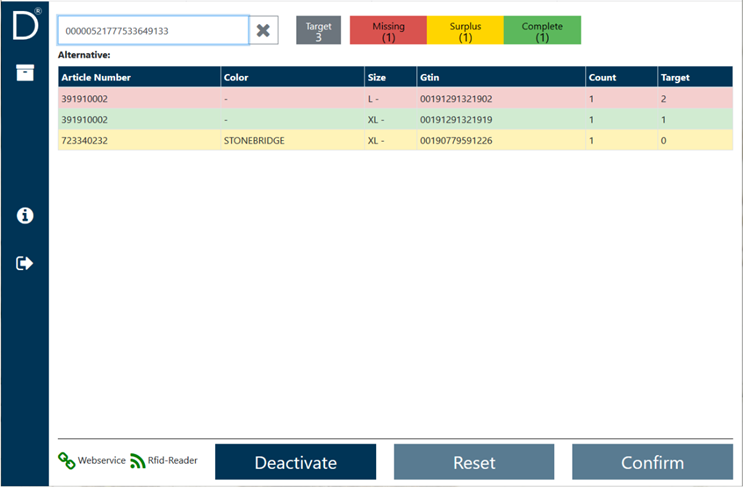

Finally, RFID is used to count, verify, and log all outbound shipments.
Goods pass along automated conveyor belts through RFID tunnels. Box barcodes (Using a target list supplied by the Warehouse Management Systems) are scanned at the entrance to the tunnel and an RFID reader in the tunnel reads the contents of each box. If the tunnel detects any differences against the target list, the conveyor system automatically diverts the carton for further inspection.
Outbound results are then sent to the WMS, to update the stock information for the DC. When the DC has processed all cartons from the target lists, the system creates an advanced shipping notice (ASN) for the store that will receive the goods.




The benefits of RFID in the supply chain
Now we have run through how retailers use RFID at specific stages in the supply chain let’s look at the results of doing so. We can broadly split these benefits into three areas:
Accuracy
Accuracy is often the first thing people think of when they hear RFID and with good reason. For the supply chain, RFID improves shipping and inventory accuracy by
1 – Performing more reliable (99%) inventory counts than traditional methods
2 – Counting on an item-level as opposed to an SKU level
3 – Being able to identify and fix mistakes at more stages of the process due to the ease and speed of RFID reads
The financial impact of improving inventory and shipping accuracy across a supply chain is huge, and can include:



Efficiency
The other great strength of RFID is the speed at which it can count and verify items or even entire cartons in seconds. With automated RFID tunnels and a conveyor system diverting any cartons with discrepancies, the efficiency of the DC is maximised, and not at the cost of accuracy. DC’s using RFID have a higher throughput, as they are simply able to process items and orders at a faster rate.



Visibility
The other major benefit of RFID supply chains is the complete visibility they have other individual items and the movement of merchandise. This not only means shipments and items are trackable in close to real-time, but the number of ‘read-events’ from source to store creates a huge amount of highly valuable data. This data produces useful KPI’s such as throughput, dwell-time, and DC performance. It also allows retailers to trace items back through the supply chain, which is hugely valuable in terms of brand protection and loss prevention.







Summary
RFID is used to accurately count, correct, and track all individual items and cartons across the supply chain. This starts in the factory where items are tagged at source, goes on to the distribution centre where orders are sorted and finally sent out to stores. Every time an item enters or leaves a stage of the process it is counted with RFID and all mistakes are identified and corrected.
The most notable benefits for supply chains using RFID come in the form of greater accuracy, efficiency, and complete visibility over the flow of goods. The increased accuracy of both inventory and individual orders can lead to top-line growth, fewer stock outages and the reduction of customer chargebacks for shipping mistakes. The efficiency increase makes supply chains more durable and increases overall item throughput and finally, the visibility of items allow retailers to optimise their operations and offer better services such as omnichannel purchase options.
RFID can be used for all inbound and outbound shipments, logging the contents of each order, and comparing them to the target list – which identifies shipping mistakes before they happen. RFID can also be used in the picking and packing process, counting the items in a carton as the DC staff picks the order, RFID software then confirms whether the order has been picked correctly before it is sent for outbound processing.
There are several types of RFID readers used throughout the supply chain. RFID tunnels are fixed readers built into a conveyor system, they scan the contents of cartons without needing for the carton to be opened and if they detect any discrepancies the conveyor will send the carton to an exception lane. RFID chambers are often used during exception handling, whereas audit tables can be used for this as well is the picking process. Finally, the handheld RFID reader is often used in stores or storage areas when staff need to move around a space to perform a cycle count.
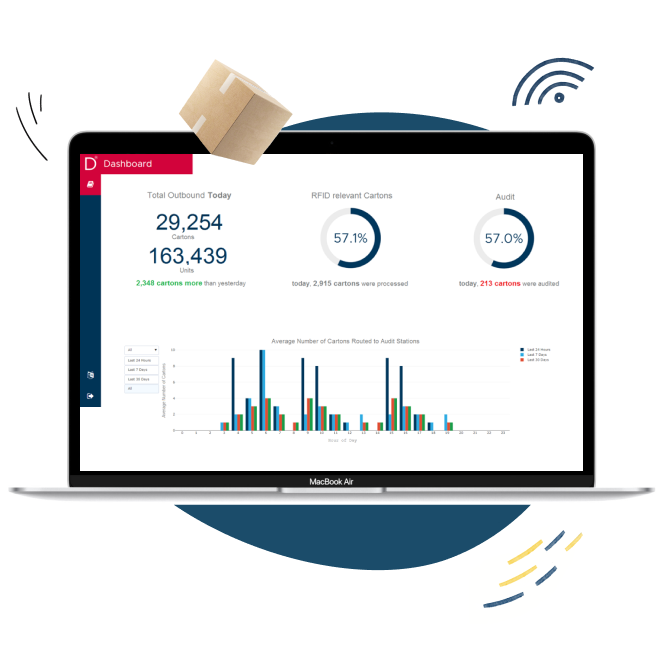
RFID software for the warehouse
The digital supply chain
Detego’s RFID-based warehouse software enables retailers to automate and dramatically improve their receiving, picking/packing and shipping processes in factories and/or distribution centers. These steps are vital parts of an end-to-end RFID solution, providing full visibility across the entire supply chain.

